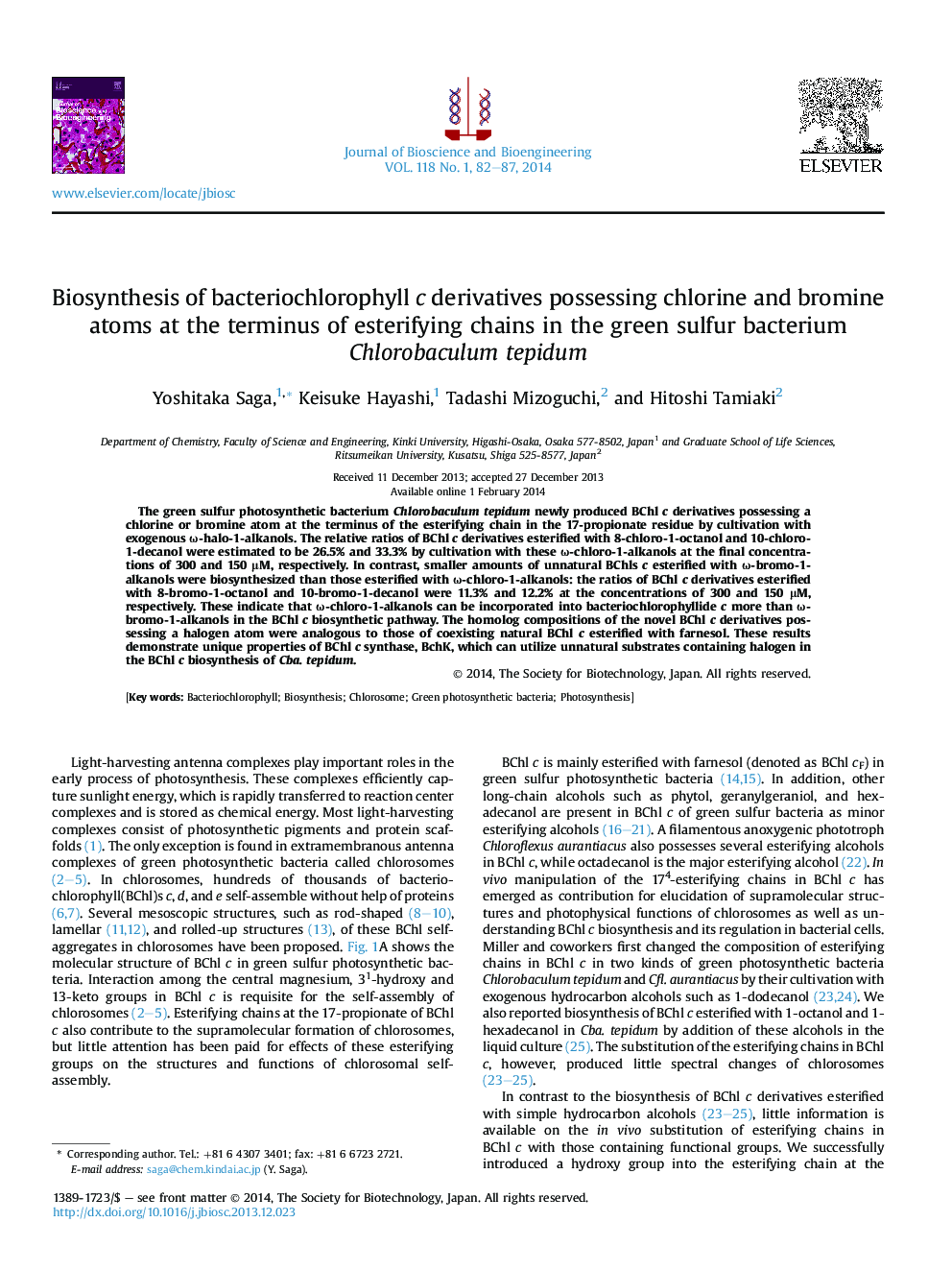| Article ID | Journal | Published Year | Pages | File Type |
|---|---|---|---|---|
| 20539 | Journal of Bioscience and Bioengineering | 2014 | 6 Pages |
The green sulfur photosynthetic bacterium Chlorobaculum tepidum newly produced BChl c derivatives possessing a chlorine or bromine atom at the terminus of the esterifying chain in the 17-propionate residue by cultivation with exogenous ω-halo-1-alkanols. The relative ratios of BChl c derivatives esterified with 8-chloro-1-octanol and 10-chloro-1-decanol were estimated to be 26.5% and 33.3% by cultivation with these ω-chloro-1-alkanols at the final concentrations of 300 and 150 μM, respectively. In contrast, smaller amounts of unnatural BChls c esterified with ω-bromo-1-alkanols were biosynthesized than those esterified with ω-chloro-1-alkanols: the ratios of BChl c derivatives esterified with 8-bromo-1-octanol and 10-bromo-1-decanol were 11.3% and 12.2% at the concentrations of 300 and 150 μM, respectively. These indicate that ω-chloro-1-alkanols can be incorporated into bacteriochlorophyllide c more than ω-bromo-1-alkanols in the BChl c biosynthetic pathway. The homolog compositions of the novel BChl c derivatives possessing a halogen atom were analogous to those of coexisting natural BChl c esterified with farnesol. These results demonstrate unique properties of BChl c synthase, BchK, which can utilize unnatural substrates containing halogen in the BChl c biosynthesis of Cba. tepidum.
